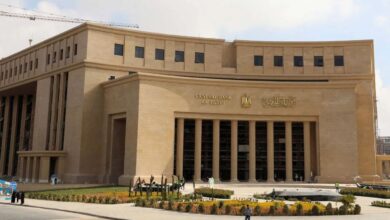Egypt’s external debt grew by US $4 billion in March 2013 reaching $38.4 billion compared to $34.4 billion in June 2012, according to a report issued by the Central Bank of Egypt (CBE).
The CBE attributed this rise to the net disbursements which reached $4.5 billion worth of loans, facilities and deposits.
The majority of the borrowing currencies have depreciated against the US dollar by $460.4 million worth. Moreover, the debt service climbed by $ 62.5 million to reach $ 2.6 billion in the period of July-March 2012/2013.
The debt represented 14.7% of Egypt’s GDP.
Net foreign reserves declined to $14.9 billion in March 2013 compared to $15.5 billion at the end of June 2013.
The country’s domestic public debt amounted to EGP 1460.4 billion at the end of March 2013 of which government debt represented 82.9%, the public economic authority 4.4% and NIB debt 12.7%.
“The former government was relying on nothing but loans. We took loans from Turkey, Saudi Arabia and Qatar and other countries,” said Magdy Toulba, economic expert and manager of a financial consultancy company. He continued, “It is because the officials believed taking loans was the easiest way to provide foreign currency and rift the state’s economic woes, which consequently raised the foreign debts.”
In May, Qatar pledged $3 billion in low interest aid to Egypt, which is the latest package out of a total of $8 billion in aid. Moreover, in 2012, Turkey signed an aid agreement with Egypt worth $1 billion.
Toulba asserted that Egyptian remittances and Suez Canal revenues are now the only sources of foreign cash reserves, especially after most factories halted their own operations and the tourism industry (which employs approximately 2.83 million Egyptians) lost close to half of its revenues pushing the GDP down.
Toulba noted that taking too out too many loans will weigh negatively on the country’s development because instead of investing government revenue in health, education and other services, money will be directed back to the lenders.




